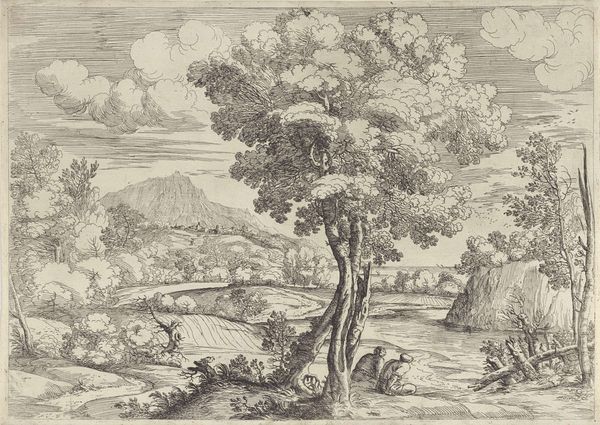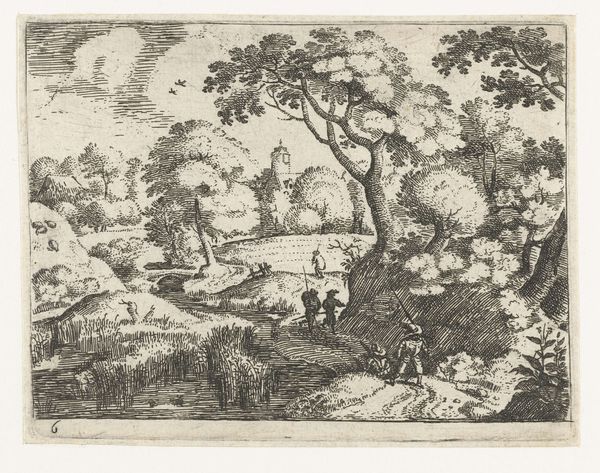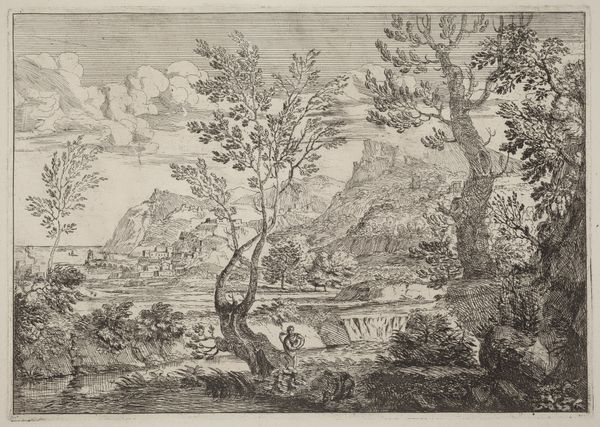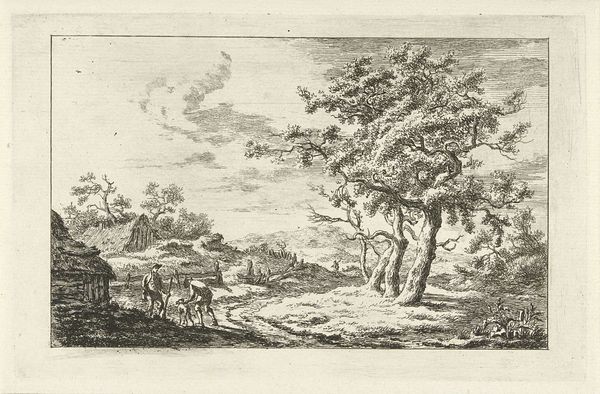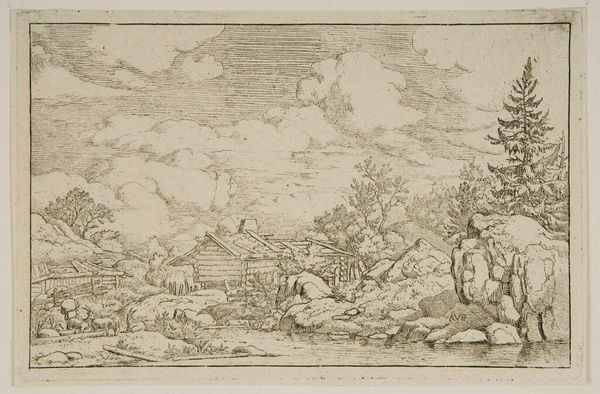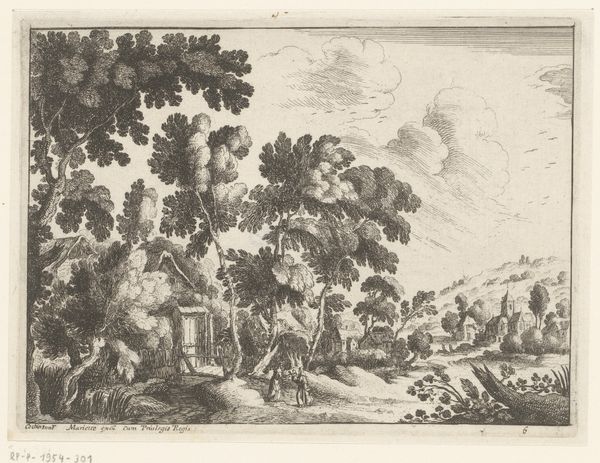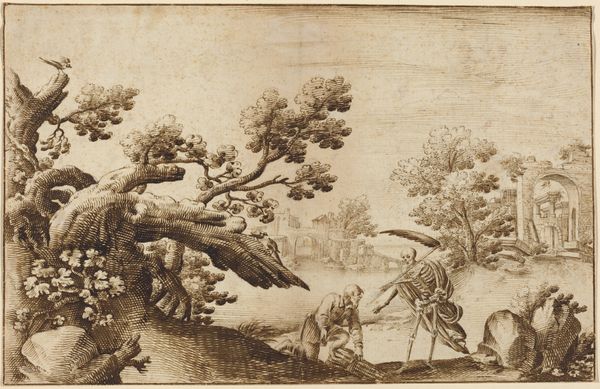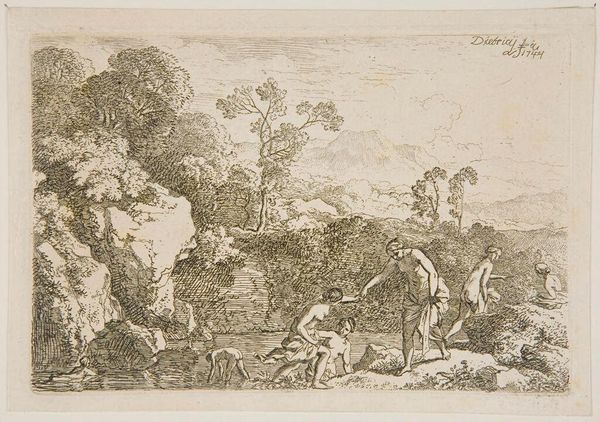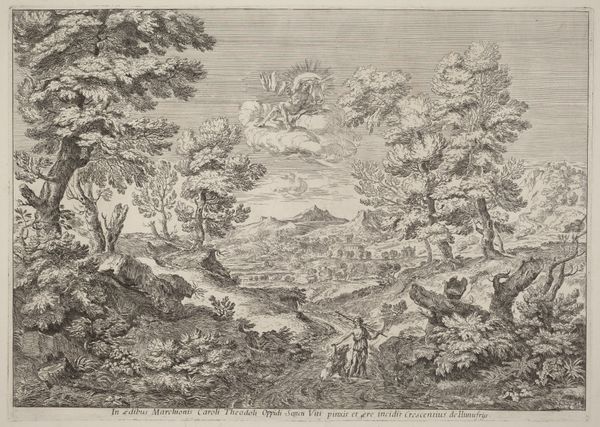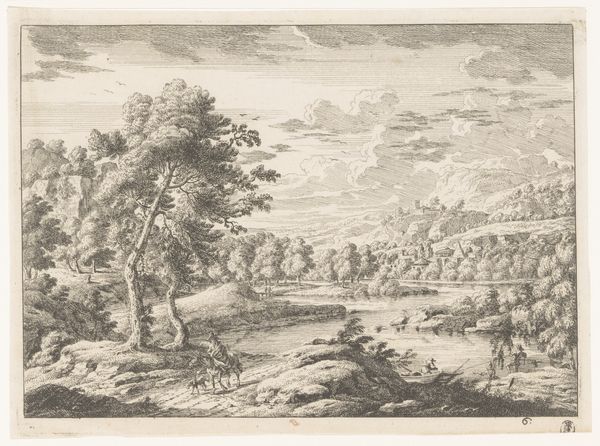
Duinlandschap met rustende herders en mannen die vlinders vangen 1764 - 1814
0:00
0:00
anonymous
Rijksmuseum
print, etching, engraving
# print
#
pen illustration
#
pen sketch
#
etching
#
old engraving style
#
landscape
#
romanticism
#
genre-painting
#
engraving
Dimensions: height 71 mm, width 105 mm
Copyright: Rijks Museum: Open Domain
This print, called "Dune landscape with resting shepherds and men catching butterflies," was made by an anonymous artist, and is held at the Rijksmuseum. The scene depicts a rural idyll; shepherds rest while men chase butterflies. But what is the public role of such an image? What are the social conditions that shaped its production? Landscape prints like this one gained popularity in the Netherlands. This popularity reflects a growing interest in nature and the countryside among the urban middle class. They were a sign of a more sophisticated lifestyle. The social conditions that shaped artistic production include a growing economy and the rise of a wealthy merchant class. To understand its meaning better, we might use research resources like historical surveys of Dutch printmaking and studies of the art market in the Netherlands. The meaning of art is always contingent on its social and institutional context.
Comments
No comments
Be the first to comment and join the conversation on the ultimate creative platform.
